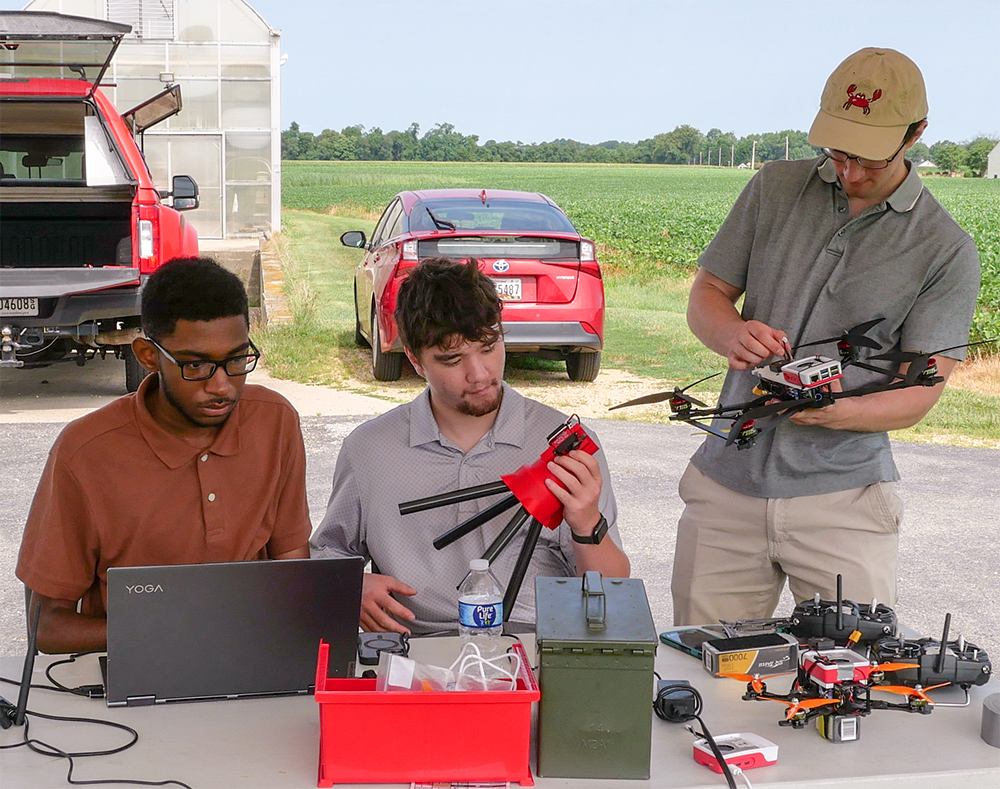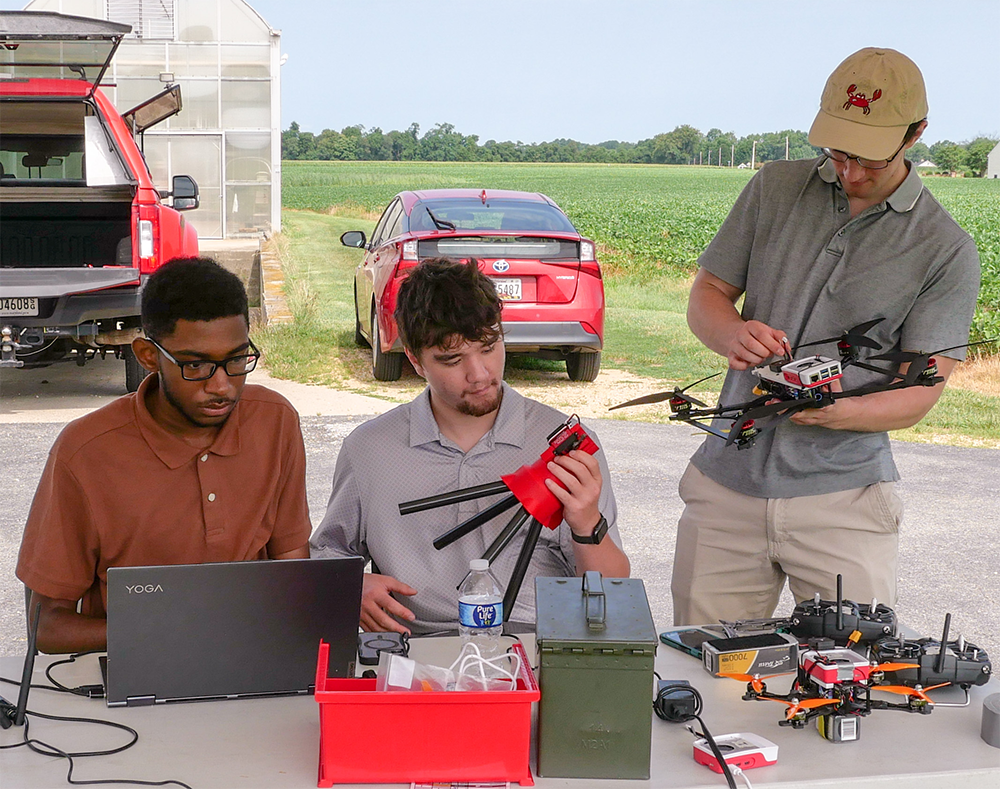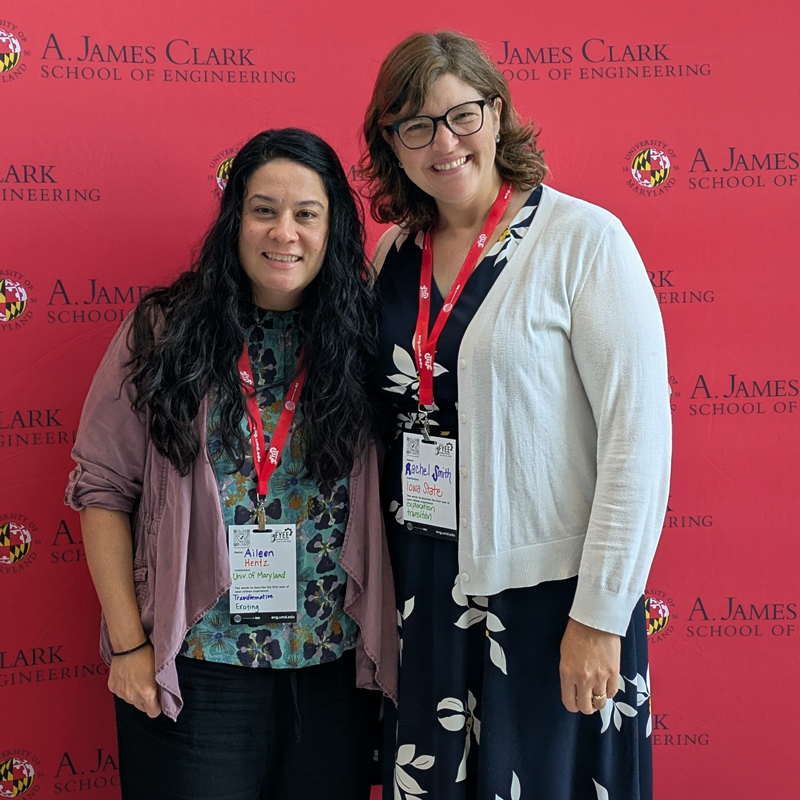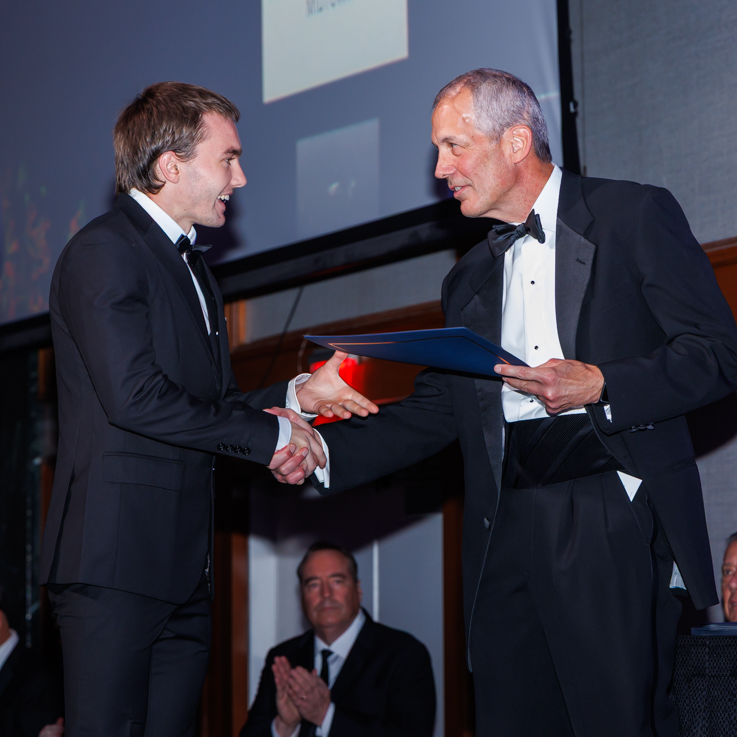News Story
UROC Interns Explore Counter UAS, VTOL

Counter UAS. Navigation without GPS. Vertical Takeoff and Landing (VTOL). At the University of Maryland’s (UMD) UAS Research and Operations Center (UROC), an enterprising group of students is experimenting with bold ideas that could help shape the future.
The five interns—Ben Falco, Christian Jordan, Jacob Safeer, Amadou Wade, and Ian Wright—have spent the summer fleshing out solutions to some of the most pressing challenges in the UAS field.

From left: UROC summer interns Christian Jordan, Ian Wright and Ben Falco test their Counter UAS system at a site in Southern Maryland. [Photo: Lauren Bacon]
Take Counter UAS, for example. Several recent incidents, including one at an NFL playoff game, have highlighted the need for a system that can take out rogue drones. But intercepting a UAS isn’t easy; some travel at speeds of up to 90 miles per hour. Three of this year’s UROC interns—Falco, Jordan, and Wright—are experimenting with a solution that involves equipping a defender drone with a net gun.
"The system has to be fast enough to intercept the attacker drone and big enough to catch it and make it stop attacking," explains Wright. The project is a continuation of work initiated by Falco, who participated in the UROC program in 2023 and has been refining the approach throughout the year. The Army Research Laboratory (ARL) is helping to support their work through the National Security Scholars Summer Internship Program (NSSIP).
"I was looking for an internship that would give me an opportunity to create, design, and build, rather than just sit behind a computer all day. It’s helped me learn things that I can incorporate in my work going forward with drones and VTOL aircraft."
Jacob Safeer, aerospace engineering student, University of Maryland
Wade’s GPS-free navigation project, meanwhile, could help facilitate use of aerial drones in spaces such as industry warehouses. "Large companies need to keep track of their inventories, and drones can potentially help with that. But they have to be able to navigate in situations where they can’t access the GPS signal," he said. His solution, developed in collaboration with University of Tuskegee Assistant Professor Ndoye Mandoye, involves a system of localization beacons.
Finally, Safeer is busy with the development of a tricopter drone that utilizes its three tiltable arms as one large rotor to lift the entire aircraft, driven by smaller motors and propellors at the end of each arm. The project, mentored by Professor Inderjit Chopra of UMD’s Alfred J, Gessow Rotorcraft Center, builds off a concept first proposed by a former UMD aerospace engineering student, Nicholas Rehm, whose highly popular YouTube channel features dozens of drone and rotorcraft orojects.
While designing, building, and testing are the bread and butter of UROC’s program, the interns are also responsible for project management tasks, such as setting budgets and timelines. All five interns report on their progress each week by delivering quad chart presentations to UROC’s full-time staff of engineers and pilots.
The hands-on aspect of the program is a major draw, Safeer said. "I was looking for an internship that would give me an opportunity to create, design, and build, rather than just sit behind a computer all day,” he said. “It’s helped me learn things that I can incorporate in my work going forward with drones and VTOL aircraft."
Wade highlights the resources and support provided by the UROC team. "This internship has given me the opportunity to research something I am passionate about, with the resources and mentorship needed to pursue those projects," he said.
"In the next 10 years, the UAS industry is going to be a very big thing, and this program is helping me position myself to be part of it," he said.
Published July 24, 2024









